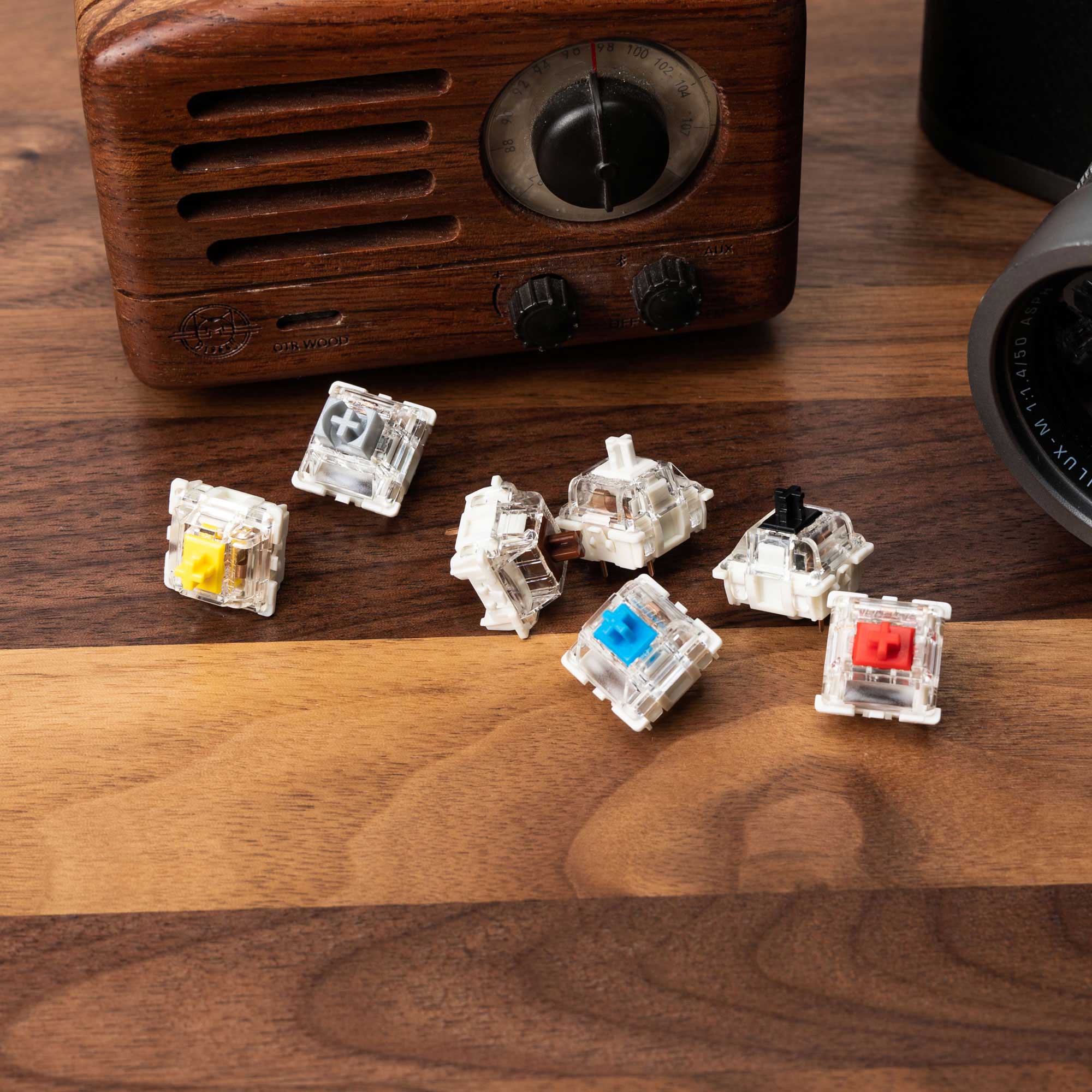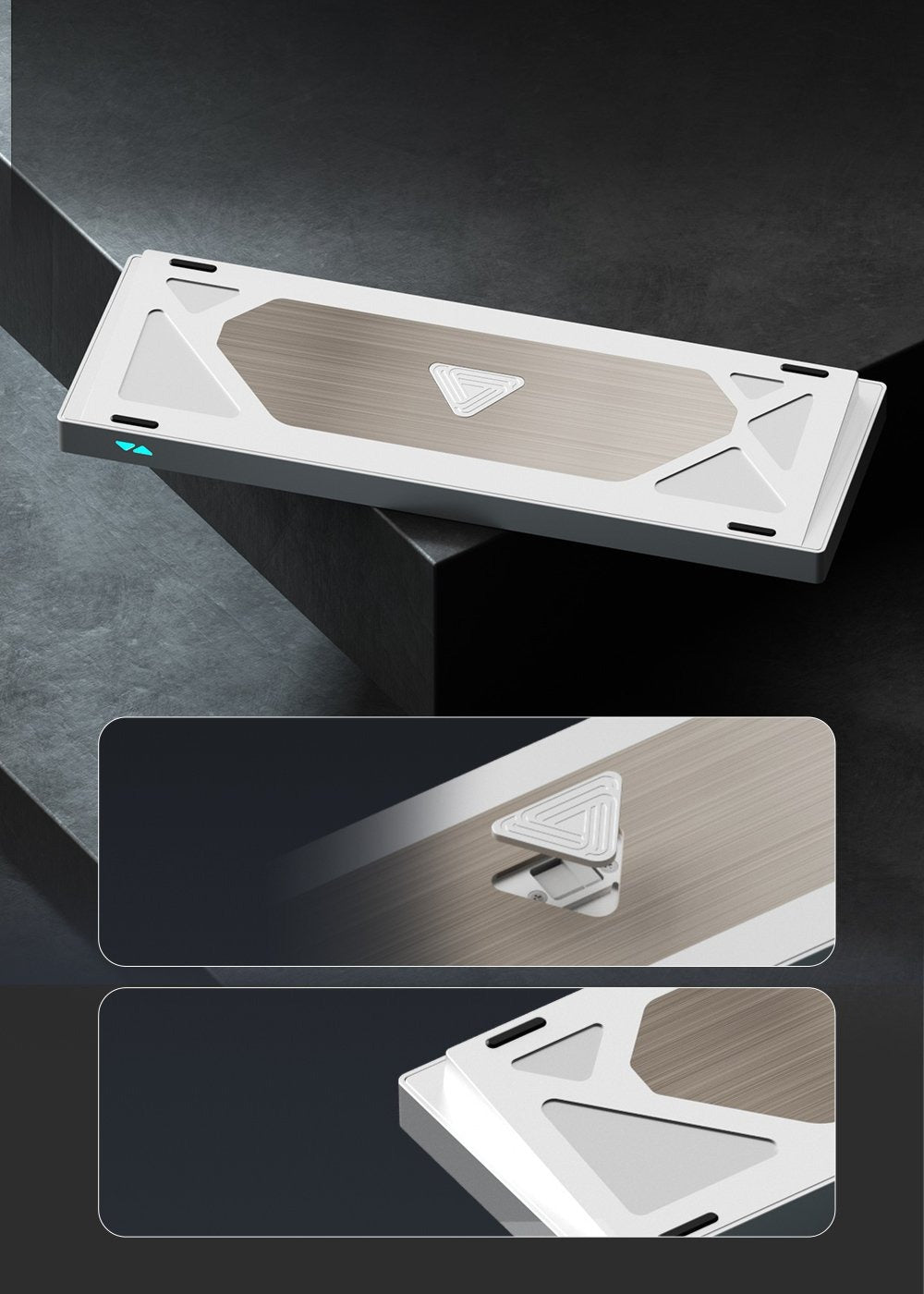Mechanical keyboards have become a favorite among enthusiasts and typists alike, partly due to the satisfying feedback they provide. Whether it’s a smooth press, a tactile bump, or that iconic "click," key switches deliver unique experiences shaped by precise physics. But what exactly makes these switches click? Let’s dive into the science behind key switch mechanics and explore how their components create distinct sensations and sounds.
Anatomy of a Mechanical Key Switch
To understand what makes key switches click, it's essential to break down the components:
-
Stem: The moving part of the switch that connects to the keycap.
-
Spring: Provides resistance and returns the switch to its original position after being pressed.
-
Housing: Encases the components and provides structure.
-
Contacts: Conductive elements that complete the electrical circuit when pressed.
-
Leaf Spring or Click Bar (Clicky Switches): Additional component that produces the audible click.
The Science Behind the Click
1. Click Bars and Leaf Springs (Clicky Switches)
In clicky switches, the click bar or leaf spring is responsible for the distinct sound.
-
When you press the key, the stem pushes against the click bar.
-
At a specific point, the bar snaps back with enough force to create a clicking sound.
-
The sound is a result of the rapid release of tension and vibration within the switch housing.
This snapping action is analogous to bending and releasing a metal strip, which vibrates to produce sound waves.
2. Tactile Bumps (Tactile Switches)
Tactile switches lack a distinct click but provide feedback through a bump in the keystroke.
-
As the key is pressed, the stem encounters resistance from a bump on the switch housing.
-
This resistance is overcome with additional pressure, resulting in a "pop" sensation.
This bump serves as a form of mechanical feedback, letting typists know the keypress has been registered.
3. Smooth Travel (Linear Switches)
Linear switches are the simplest in terms of mechanics.
-
The stem moves directly up and down without tactile feedback or audible clicks.
-
The absence of bumps or bars allows for a consistent, uninterrupted keypress.
This design minimizes friction and vibration, making them quieter and smoother.
Acoustic Properties of Switches
The sound produced by a key switch depends on several factors:
-
Material Density: Denser switch housings produce deeper sounds.
-
Spring Weight: Heavier springs can amplify or dampen sound vibrations.
-
Housing Design: Switches with tighter enclosures tend to contain sound better.
-
Lubrication: Reduces friction and dampens sound for a smoother, quieter press.
Why Clicky Switches Are So Satisfying
The physics of the click isn't just about mechanics—it's also about psychology:
-
Auditory Feedback: The click confirms that a keypress has been registered, creating a sense of accomplishment.
-
Tactile Reinforcement: The combination of sound and touch reinforces muscle memory, improving typing accuracy.
-
Rhythmic Typing: The click sound creates a rhythmic feedback loop, making typing more enjoyable for some users.
Conclusion
The click of a key switch is a fascinating interplay of mechanical components and physical principles. From the snapping of click bars to the satisfying bump of tactile switches, each design harnesses physics to enhance the typing experience. Whether you prefer the silent glide of linear switches or the iconic click of clicky switches, understanding the mechanics behind them can deepen your appreciation for the art and science of mechanical keyboards.






